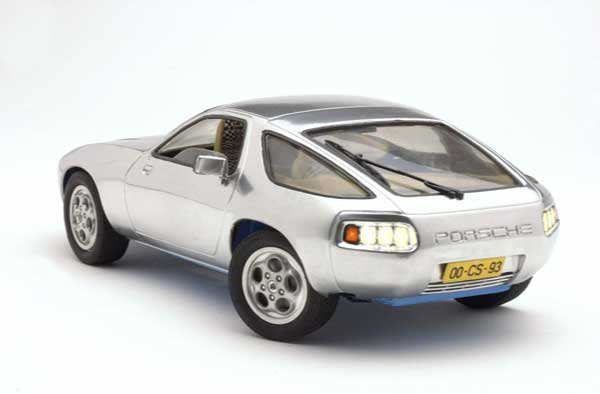When we think about design we usually consider a fragile compromise between the practical qualities and aesthetic qualities of a product. The result will lead the viewer to consider a known concept or problem from a new perspective. Experiencing contemporary design is essentially re-adjusting our view of the future. In this essay I will attempt to outline Oskar de Kiefte’s work in the light of SLOW Design and sustainability. I will also consider the role of humor in his work.
In the work of Oskar de Kiefte we are not presented with a considerate balance of aesthetics versus practicality. Instead, Oskar chooses to show us a crude example of how technical simplicity can lead to new and interesting solutions. The Wind Turbine Car is a car without compromise, without consideration for elegance but rather the result of pure technical problem-solving. The wild, exciting and adventurous shape reminds me of deep sea exploration and space travel. The cause for such boyish associations is merely the technical nature of its design. From start to finish, every aspect of the car was designed to be for optimal performance. How do you turn wind resistance into wind stimulation? You build > this<
The wheel hasn’t changed
Taking problems and their respective solutions into the absurd is something we see in many of Oskar’s works. Like a child drawing houses like squares with triangle roofs, Oskar paints a naïve picture of the world. If your lock is more expensive than your bike, then why not have your lock as a bike?
I caught myself wondering why I should take something so simple seriously. Yet, these ingenious solutions left me curiously content. As if they somehow capture the essence of their subject in a simple twist (sometimes literally)
This Porsche is like any other 928 model. And like any other 928 of this model, it is faster in reverse. Aerodynamically the design of the Porsche 928 would allow it to go faster if it was turned around. So in response to this waste of air resistance, Oskar turned the inside of the Porshe 180 degrees and the engine too. Driving it reversed makes it go faster than the regular model and so fulfills the purpose of a sports car better. Of course, manufacturing sports cars is not simply about building the fastest machine. The car also needs to please the eye. Smooth curves like illustrations of the wind are a popular mark for sports cars. The vanity of raw power. By turning the Porsche, Oskar points out the absurdity of compromising efficiency for aesthetics.
“…is techniek voor mij niet een doel maar een middel. Ik heb de techniek nodig om te laten zien dat het ook anders kan. Ik kijk naar waar mensen zich mee bezig houden en bedenk verbeteringen of trek een tendens door tot in het absurde.”
The most popular definition of sustainability can be traced to a 1987 UN conference. It defined sustainable developments as those that “meet present needs without compromising the ability of future generations to meet their needs”
Sustainability embodies ‘responsibility’. Sustainability stresses the importance of efficiency to provide for future needs. In this quest for longevity we care less about eye candy but value durability more. This new focus questions what we care to see and think. Oskar cares to show that what we need to meet present needs is simply neglected in favor of traditional beauty. Beauty, in the romantic sense. The way horses are beautiful as totems of natural elegance.
However, responsibility wasn’t so highly valued some 20 years ago. Beauty was affordable. Thinking in these new terms of sustainability, the demand for aesthetics has decreased making way for durability. Design has responded to the increasing awareness of our limited resources and began proposing new ideas under names such as SLOW Design. Thinking about Oskar de Kiefte’s work in this context brings a few interesting characteristics to light. For instance, the use of humor in mediating his message. Many artists share a similar goal that is recognized by SLOW Design. Though not all artists use the same method of convincing people. Designing a product that lasts isn’t simply enough to make people believe in it. There is always a mood supporting the work, an ideology that people can relate to or feel comfortable with.
Do you believe?
‘Humor’ is a very general term and both its definition and meaning have not been extensively questioned. Though many artists, philosophers, poets, psychologists and other thinkers have touched the subject, no general theories have been proposed.
Laughter can be heard frequently in most societies though its exact meaning may differ from occasion to occasion and from culture to culture.
Pointing out the obvious in an obvious way sends a strong message. But it’s the silliness of simplicity that stimulates humor. And it’s the fact you laugh, that makes works like ‘De Dikke Buizen Fiets’ charming.
Oskar does not propose usable technology. But rather makes us reconsider the way we are using existing technology today. By leading problems away from the real world, onto his work bench and transforming them into statements. Not unlike a comedian, who will observe everyday life and comment on his observations through the use of humor.
Truck, from the Greek word trokhos (??????) meaning “wheel”.
“We laugh at fools, and at those who pretend to be wise – at extreme simplicity, awkwardness, hypocrisy, and affectation”
-Hazlitt
The role of a comedian might be described as a public figure whose position in society allows him to operate outside social conventions. A comedian generally reacts to his environment and speaks out his observations in an act. Comparably, the role of a designer is to creatively engage with concepts in society and speak them out in products. I want to underline this format of reflecting and engaging as a basic similarity between design and comedy. I will commit further to this topic later on.
We read design expecting to find solutions from a creative point of view. This type of expectation is different from say, when you read a Newsweek article on the fall of Gaddafi’s regime. You open the magazine expecting to read a factual outline of Libya’s political situation. To find an elaborate description on Gaddafi’s sunglasses would be disappointing. It is what we expect to experience that shapes a large part of our experience.
If we assume visitors to a gallery to be interested in design, we can also assume they have a predisposition towards what design is. That is to say, they are aware of what design can teach them. Entering a gallery with design on display we naturally find the right state of mind to read the works and appreciate them according to what we know about design. Regardless of what we expect to see, we blindly validate the works as being design because they are in a gallery. This assumption, I believe, is crucial to how people react to design. As I mentioned above, the role of a designer is to reflect and engage. What is beneficial to a designer about using humor?
Tractors are serious. Are tractors serious?
I have already outlined one basic similarity between design and comedy. Now I’d like to venture deeper into the use of humor. Humor usually causes laughter. Laughter is believed to release an excess of mental or nervous energy accumulated in the body as a result of some previous activity. Laughter is pleasurable. In general, there is little that can be said of laughter physiologically which cannot be said of orgasm.
The caveman laughed at the physical misfortunes of others, possibly because those misfortunes might have been physical manifestations of defeat in a fight. Humor meant exultation, the sense of personal triumph over one’s adversary, or the sense of delight in seeing something – anything – demolished or knocked out of shape. In such a form it was older than written language, and no doubt older than language itself, belonging in the age of grunts and barks out of which language itself arose. In spite of this inherent hostility, mankind did not discard laughter, even derisive laughter. There are good reasons. For laughter has two qualities which combine to make it very much worth while retaining, even at some cost. It provides a pleasurable feeling of relaxation to the person who laughs; and it contains an invaluable social factor, “contagion”, which tends to spread this feeling over a wide group.
Eventually, ridicule became even more cultivated and civilized and developed into “genial humor” which is, actually, loving, affectionate ridicule. And the final remarkable achievement to conclude a remarkable line of succession was: the ability to laugh humorously at oneself. Where the Jewish “self-disparaging” humor is interpreted as evidence of the mental act of rising above one’s deficiencies by frankly admitting and enjoying them.
The ability of humor to cause a group of people to feel relaxed makes it seem an attractive tool for mediating your message. If you have something to say and are able to present it to people who are relaxed, the content of your message might be more successfully received.
In the case of Oskar, I believe it also says something about his attitude towards design. His humor allows him to reveal findings with a sense of nonchalance.
Extract from e-mail I received from Oskar:
“…Goed dat je dat er uit haalt van die humor, dat vind ik zeker heel belangrijk. Ook om er luchtig mee om te gaan( die idiote ontwerpen van vele designers.”
Oskar does not propose usable technology. But rather makes us reconsider the way we are using existing technology today. Humor in design is like the background in a portrait. It is not the subject itself but rather the context it’s in. To approach an audience with humor is to cast an enjoyable mood. People gladly accept humor even though we don’t fully understand its use and meaning. The way fortune telling is veiled with mysticism, Oskar presents his opinion casted in dry humor. His practical approach to design teaches us to consider simplicity as a valid ideology.
http://www.youtube.com/watch?v=A91RdEecPtQ&feature=related
I believe awareness is an important first step towards change. Becoming aware of a problem and trying to resolve it are two different stages in the process of change. I see design is spacious enough to accommodate for both, as a place where future needs become products and as a mediator between awareness and proposing solutions. If we speak about the act of raising awareness we speak of an occurrence that makes people (re)consider. In other words, to make them think. In this category of design, artists may use a wide variety of tools to accomplish their goal as their results are not meant to be directly put to people. Instead, their works leave people wondering about tradition and the future. It seems to me that humor is especially valuable in this field because it enables us to admit our deficiencies and overcome them.

